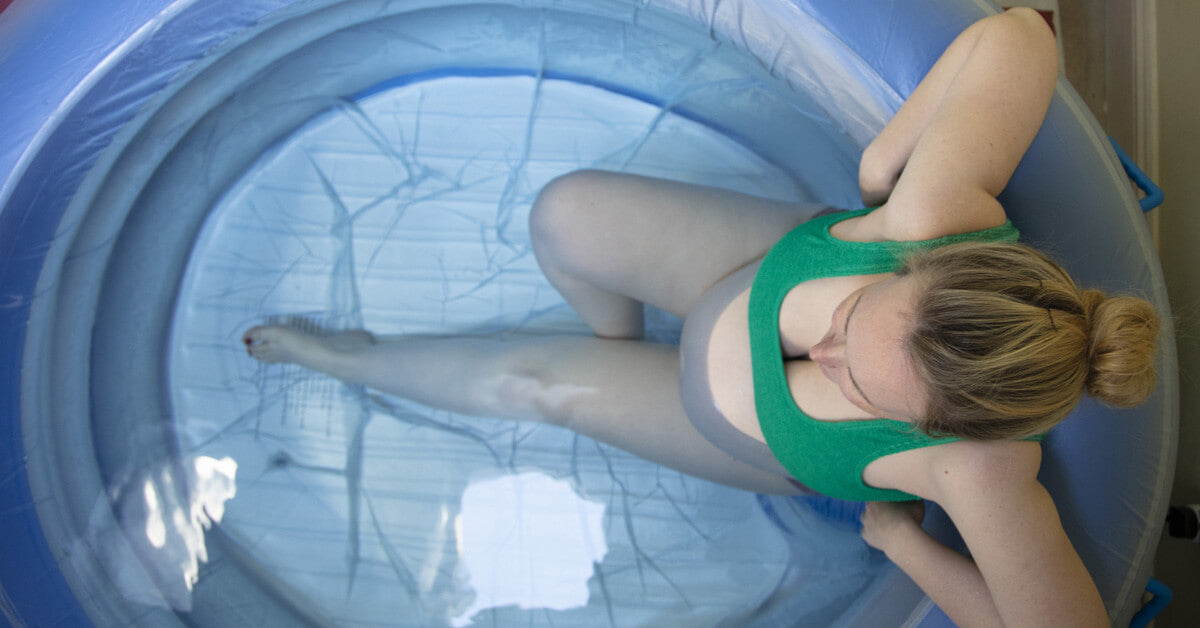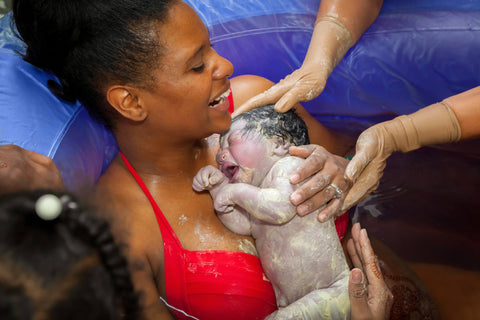
Is Homebirth For Me?
Many women who choose planned home birth desire to give birth without medical intervention, they also love the idea of giving birth in a comfortable, familiar environment surrounded by family.
Homebirths have been widely embraced by most mothers in the USA and other parts of the world. Why? Well, many women who choose planned home birth desire to give birth without medical intervention, such as labor augmentation, pain medication, labor induction, or fetus heart rate monitoring. They also love the idea of giving birth in a comfortable, familiar environment surrounded by family.
But is planned home birth all that simple? Read on to get the facts about the possible risks and tips on preparing for planned homebirth.
Whom is home birth for? Why isn't it for everyone?
If you're considering planned home birth, you probably have a lot of questions. Is it the right thing for you? Is it safe? Well, the truth is homebirth is not for everyone. Delivery at home is NOT for you if;
-
You previously had a C- section.
-
You are carrying more than one fetus.
-
Your baby is not settled in the head-first position.
-
You crave pain relief.
-
You have vaginal bleeding.
-
Your baby is showing signs of distress, like an abnormal heart rate before delivery.
-
Labor is not progressive.
-
You find traces of Meconium in your amniotic fluid.
-
You suffer from chronic conditions like diabetes and high blood pressure. Or if it develops during pregnancy.
-
Your labor starts before 36 weeks (preterm) or after 42 weeks (post-term).
-
You are located far from a hospital in case of complications.
Risks and Benefits of Homebirth
You might want to choose planned home birth for many reasons, including:
Homebirth benefits
-
Planned home birth lower the rates of maternal morbidities, such as perineal lacerations and postpartum hemorrhage.
-
Reduces medical interventions during delivery such as instrumental vaginal birth, episiotomy, and cesarean birth
-
It gives the mother more control. For example, it gives you the freedom to decide whether to eat and take a warm bath to help with labor.
-
Religious and cultural beliefs are preserved.
-
Guarantee a high satisfaction rate because the mother is in a familiar and more comfortable environment that makes her feel more in control of the experience.
-
Reduces expenses.
Risks
-
Homebirth increases the risk for neonatal death and seizures. During labor, your health caregiver periodically rather than continuously monitors your blood pressure, temperature, pulse, and your baby's heart rate.
-
Fewer options for pain control.
-
Your insurance may not cover homebirth costs.
-
It is messy. Plastic sheets and clean towels are necessary during delivery.
-
A complication during delivery may require you to visit the hospital.
How To Prepare For a Home Birth
A homebirth requires sufficient preparation to ensure the safety of the mother and baby. Below are a few tips on how to prepare for a home birth.
Find a Midwife
Your midwife should be adequately trained to help women in labor and childbirth.
He or she should be an obstetrician or midwife/nurse who's certified by American Midwifery Certification Board or any other independent organ.
Working with a qualified professional ensures that someone with enough knowledge of an all-natural, drug-free birth is taking care of you.
Review your insurance
One of the most common ways of paying for maternal care is through insurance. However, the amount the insurance will cover (if it covers it) depends on the specific terms of the plan and the type of care your insurer considers as a medical necessity. Unfortunately, about 70% of home births are paid out of pocket, according to an analysis posted on the US National Library of Medicine. It's, therefore, advisable to prepare for the expenses. The cost may range from $500 to $1000.
Gather your home birth necessities
Your midwife will provide you with a list of your home birth delivery requirements. The items include;
-
Plastic sheets
-
Chux pads or Puppy Pads (at least 10)
-
An antiseptic soap
-
Cord lamps
-
A Peri bottle
-
Flashlight
-
A fresh roll of paper towels
-
Disposable mesh underwear
-
Two large freezer size Ziploc Bags – these are essential if you want to save your placenta
Your midwife can also bring along some supplies like cord clamps, disposable gloves, suture supplies, and medication, including Pitocin that's used to treat bleeding, antibiotics, and IVs. They can also administer medication like vitamin K and eye ointment to the newborn. Therefore, it's best to check with her to see what supplies she's already bringing before making any arrangements.
In case you need a water birth, you will need a practical birth tub. You may rent one or buy an expandable birth pool. Such a birth tub will make it easy for your midwife to access you if you need assistance throughout delivery.
Capture your own birth experience
Giving birth is a moment that changes a mother's life, body, and soul. And unlike the strict regulation at hospitals, planned home birth allows women to share their intimate journey so that other people can also be inspired. Capturing the priceless moment with home birth photos helps capture the beauty of having a baby and tells a story that can't be better expressed in words. You can preserve your beautiful birth story in a baby's first-year memory book or let the baby sonogram frame be the testimony to chronicle your pregnancy journey. A collection of photography gives birth moments life outside of mama's memory and conveys so much more information than what words can tell.
Create a birth plan
Do you have a specific method in mind to help cope with pain? Will you labor in a tub? Do you want to breastfeed your baby right after delivery? Well, it's crucial to discuss your birth plans with your caregiver and ask about what's practical and the supplies you'll need, such as a bathtub and protective coverings for your mattress or floor.
In most cases, the midwife leaves in 4-6 hours after your delivery. Therefore, you'll also need to create a lying-in plan or someone to help run home errands and take care of you and the baby as you rest. For example, you'll need warm birth and nutritious meals such as crackers, yogurt, meal bars, juice bars, and broth. A drink such a Gatorade may also help with electrolyte replacement. So have someone (your husband, friend, relative, or a nanny) who can stay with you for at least two weeks after delivery.
Ensure your midwife returns within 24 to 48 hours after delivery
The American Academy of Pediatrics says that it's best if a midwife comes back one to two days to check on the mother's health and that of the baby. She is supposed to ensure the newborn is breastfeeding well and perform other rest such as Apgar score and a heel prick test to check for rare but potentially severe disorders such as cystic fibrosis, phenylketonuria (PKU), and congenital hypothyroidism. Alternatively, you can visit your pediatrician for the tests.
 |
Meet Our KeaMommy Contributor: Avery K. When she isn’t looking after the many needs of her 2 kids, Avery enjoys taking walks in the park, enjoying nature, and getting her daily fix of caffeine. |

























































